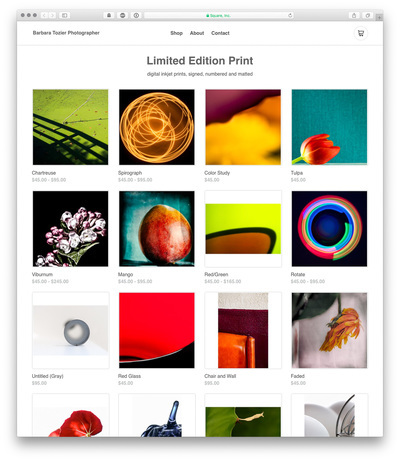On Editions
When I showed at the Ann Arbor Street Art Fair, The Original in 2014, I did it as part of their “New Art, New Artists” program. The program is designed to introduce emerging artists to the Art Fair experience and to give them an opportunity to see if being an art fair artist could be a possible path. It’s a juried position and quite competitive, and I was pleased to be a part of it. It was a fantastic experience — I talked with tons of people about art and photography, and I sold some pieces, too!
One of the Fair’s requirements for artists who make mechanically reproducible work (photographers, printmakers) is to make work in editions. This means that, as the artist, I promise that I won’t make a particular piece again once I made as many as I said I would.
In theory, editioning protects the value of the work for the buyer. It probably is more important for an established artist with a large following where there is conceivably a secondary market which cares how many of some particular piece exists. However, deciding how to size an edition at is a really difficult problem, especially for a newly-selling artist. How many should I make? What counts as an edition, anyway? “Standard” guidelines suggest that an edition is made from the same materials all at the same size and roughly all at the same time.
In 2014 when I was thinking about such things, I tried to guess how popular pieces would be (and in which sizes) and how sad I would be if I never got to print them again1. I decided to make editions according to the size of the print: smaller prints would be in an edition of 30; larger in editions of 15.
I did not print a full edition of any of the pieces I showed in 2014, and I am unlikely to.2 There undoubtedly exist non-editioned versions of some of the prints (proof prints, gifts to friends in other sizes and materials), but there is a fixed number of prints with known paper, process, and date.3

Square Store Homepage
In other words, if someone bought a piece marked “1/15” and I only made 2 of the planned 15, then they have half of the available copies of that piece. If I ever do develop a secondary market, they’re going to be pretty happy4.
All this to say: I am no longer working in editions. I’ve moved to making unique objects or pieces that don’t make sense in an edition. There may be copies of some pieces, but they are chemical prints that I can’t reprint exactly.
I’ve since figured out that I am not cut out to be an Art Fair artist (thanks for the chance to learn this without making a huge expensive mistake, Ann Arbor Street Art Fair, The Original!). I really appreciate what I learned from the New Art, New Artists program — if I had not been a part of it I wouldn’t have thought much about how editions work and if they make sense for me.
That said, please won’t you help me make space in my spare room for new work⁉
-
Especially if they were super popular and I was bound by my promise to not print more and therefore risk losing out on income. Keeping the promise is of course down to personal ethics. ↩
-
I no longer have access to the equipment. Even if I had a good quality printer, it would be a different model and a different inkset, and probably slightly different paper. Even so, I’m pretty much done with that work. I like it, I’m proud of it, but I’ve moved on. ↩
-
And the unsold ones are all in my spare room, taking up space. If you’ve read this far and want to help me clean house, please buy one or more prints. I’ll even pay the Michigan sales tax. ↩
-
Though of course I really hope they’re happy with the work as it stands. ↩